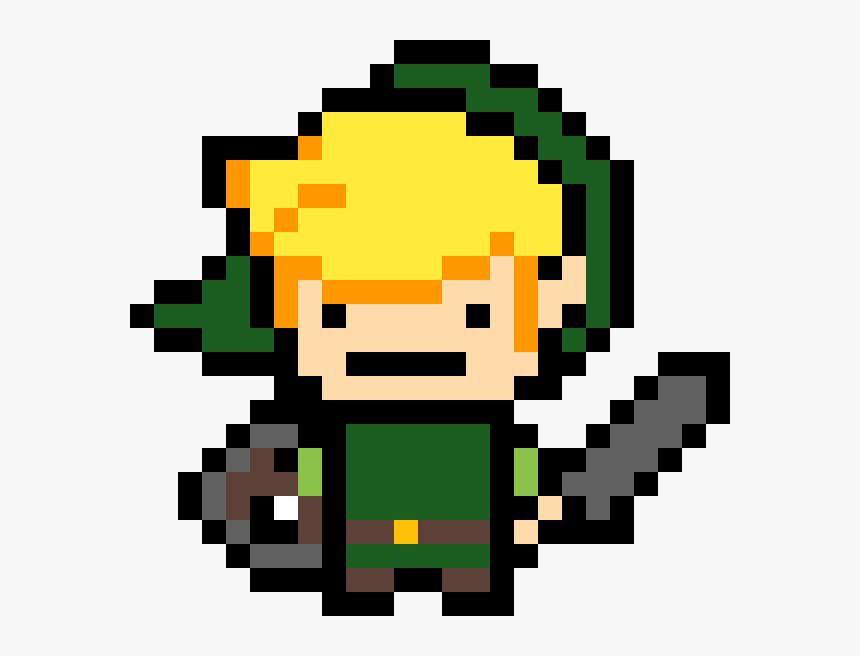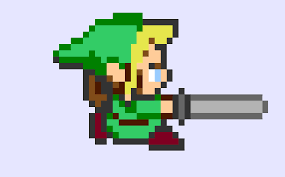Scaling pixel art traditionally involves using the nearest-neighbor interpolation method. This technique retains the pixelated aesthetic by assigning each pixel in the original image to a block of pixels in the scaled version, preserving the distinct, hard edges characteristic of pixel art. The process typically involves opening the pixel art image in software like Photoshop or Aseprite, choosing a scaling factor (e.g., 2x, 3x, or 4x), and applying nearest-neighbor interpolation to resize the image.
The result is a larger version of the pixel art where each pixel is replicated to fill a corresponding block, maintaining the overall crispness of the artwork. While more advanced interpolation methods exist for smoother scaling, traditional scaling with nearest-neighbor interpolation is preferred for preserving the pixel art style and avoiding unwanted blurring.
How do pixels and resolution play a crucial role in pixel art?

Pixels and resolution are fundamental concepts in pixel art, a form of digital art where images are created on a pixel-by-pixel basis. Understanding these concepts is crucial for creating and appreciating pixel art:
Pixels
A pixel, short for “picture element,” is the smallest unit of a digital image. It is a single point in a graphic or image.
In pixel art, each pixel is carefully placed to create detailed and stylized images. Artists work at a very low level of detail, often zooming in to work on individual pixels to achieve the desired visual effect.
Pixel art often uses a limited color palette due to the small size of individual pixels. This limitation forces artists to be creative in their use of color and encourages a distinctive aesthetic.
Resolution
Resolution refers to the number of pixels that make up an image, typically measured in width x height (e.g., 800×600 or 1920×1080).
The resolution of a pixel art image determines the overall size and level of detail. Pixel art is often created at low resolutions, such as 16×16, 32×32, or 64×64 pixels. The low resolution allows for a retro and stylized look while emphasizing the importance of individual pixels.
Pixel art doesn’t scale well to higher resolutions. When scaling up pixel art images, individual pixels become larger and lose their crispness. This is why pixel art is often viewed at its native resolution.
Pixel Density
Pixel density is the number of pixels per unit of length, often measured in pixels per inch (PPI). When creating pixel art for specific platforms or devices, understanding the pixel density is crucial. Different devices may have different pixel densities, affecting how the art appears on the screen.
Anti-Aliasing
Anti-aliasing is a technique used in digital art to smooth the jagged edges of diagonal lines or curves. In traditional digital art, anti-aliasing is often used for smoother transitions between colors. However, in pixel art, artists may intentionally avoid anti-aliasing to maintain the sharp and blocky appearance that is characteristic of the medium.
What are the pros and cons of Nearest Neighbor Scaling in pixel art?
Nearest Neighbor Scaling is a method of resizing images, including pixel art, where each pixel in the original image is directly mapped to the nearest pixel in the scaled image without any interpolation. While this method is commonly used in pixel art to maintain its blocky and retro aesthetic, it comes with both pros and cons.
Pros of Nearest Neighbor Scaling in Pixel Art
Preservation of Pixel Art Style
Nearest Neighbor Scaling preserves the distinct blocky and pixelated look of pixel art. Each pixel in the original image corresponds directly to a pixel in the scaled image, maintaining the intended style.
Sharp Edges and Crisp Details
This method retains the sharp edges and crisp details of pixel art. There is no blending or interpolation between pixels, ensuring that each pixel’s color is displayed as-is.
Pixel Art Consistency
When working with pixel art for retro games or specific platforms, maintaining a consistent pixel size is essential. Nearest Neighbor Scaling helps achieve this consistency, especially when scaling up or down by integer factors.
Performance
Nearest Neighbor Scaling is computationally less intensive compared to other scaling methods that involve interpolation. This can be advantageous in real-time applications, such as video games, where performance is critical.
Cons of Nearest Neighbor Scaling in Pixel Art
Limited to Integer Scaling
Nearest Neighbor Scaling works well when scaling by integer factors (e.g., 2x, 3x), but it can result in undesirable artifacts when scaling by non-integer factors. This limitation may be restrictive in certain situations.
Jaggies and Aliasing
The lack of interpolation can lead to jaggies (visible jagged edges) and aliasing issues, especially when scaling up images. This may be less visually appealing, especially on larger displays.
Lack of Smoothing
Nearest Neighbor Scaling does not smooth transitions between pixels, which can be a drawback when subtle gradients or smooth curves are desired. Other scaling methods, like bilinear or bicubic interpolation, may be preferred for such cases.
Artifacting at Extreme Scales
At extreme scales, such as scaling down a pixel art image significantly, Nearest Neighbor Scaling can result in blockiness and loss of detail. This may not be suitable for all use cases.
How does scaling pixel art manually impact the artistic process?

Scaling pixel art manually can have a significant impact on the artistic process, influencing the style, level of detail, and overall aesthetics of the artwork. Here are some ways in which manual scaling affects the artistic process in pixel art:
Maintaining Style and Consistency
Pixel artists often work with specific resolutions and pixel densities to achieve a particular visual style. Manual scaling allows artists to maintain consistency in their work, ensuring that the scaled version retains the original pixel art style.
Creative Constraints
Working with limited pixel space is a defining characteristic of pixel art. Manual scaling requires the artist to consider the constraints of the new canvas size, which can stimulate creativity by encouraging efficient use of pixels and strategic placement.
Detail and Clarity
When scaling pixel art manually, artists must decide how much detail to include and how to distribute it across the scaled image. Enlarging pixel art may require the addition of more details to avoid loss of clarity, while reducing the size may involve simplifying elements for readability.
Artistic Intention
The manual scaling process allows artists to express their artistic intention. They can emphasize certain elements by adjusting their size, focus on specific details, or create focal points. This level of control is crucial for conveying the intended narrative or visual impact.
Time and Precision
Manual scaling enables artists to carefully control the placement of each pixel. While this can be time-consuming, it allows for precise adjustments, ensuring that the scaled version aligns with the artist’s vision. Artists may spend additional time refining details during the scaling process.
Pixel Placement and Composition
Artists often zoom in and place individual pixels with great care to achieve the desired composition. Manual scaling means adjusting the placement of each pixel to maintain the composition and balance of the artwork, which can be both a challenge and an opportunity for creative expression.
Impact on Animation
In pixel art animation, each frame must be manually scaled to maintain consistency across the sequence. This requires careful consideration of how the movement and scale changes will affect the overall animation, adding complexity to the process.
Consideration of Display Size
The intended display size of the pixel art, whether for a game, website, or other platform, influences the manual scaling process. Artists need to ensure that the scaled art looks appropriate and visually appealing on the target display.
FAQ’s
What are the techniques of pixel art?
Pixel art techniques include dithering, shading, anti-aliasing, outlining, and selective outlining, each contributing to the style and visual appeal of the artwork.
How do I resize pixel art?
You can resize pixel art using a graphics editor like Photoshop or GIMP, choosing the “Nearest Neighbor” or “Pixel Art” scaling option to maintain the blocky aesthetic.
What is the basic pixel art size?
The basic pixel art size varies, but common starting resolutions are 16×16, 32×32, or 64×64 pixels, providing a small canvas for detailed and stylized creations.
How do I resize a pixel image without losing quality?
To resize a pixel image without losing quality, use the “Nearest Neighbor” scaling method in your graphics editor, ensuring each original pixel is directly mapped to the corresponding scaled pixel.
What are the 5 techniques of art?
The five techniques of art include line, color, shape, texture, and value, which artists use to create diverse and expressive visual compositions.
Final Words
We’ve explored the world of pixel art scaling and the traditional methods used. We discussed the basics of pixels and resolution, looked into techniques like Nearest Neighbor Scaling, Scale2x/3x/4x, and smoothing filters. We also touched on the challenges, like the loss of pixel integrity and blurring.
It’s important to choose the right scaling method for different situations and consider the intended display size and platform. As we wrap up, remember the goal: to preserve the charm of pixel art while adapting to various needs. Keep pixelating with purpose!
